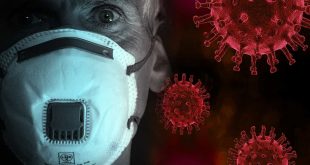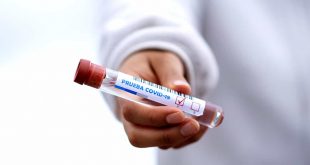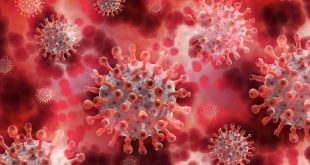COVID-19 may delay plans to eliminate tuberculosis in Inuit homelands by 2030.

Before the COVID-19 pandemic hit, Canada’s Inuit were already grappling with a much deadlier respiratory disease: tuberculosis.
The TB rate of infection for Inuit is roughly 300 times higher than for non-Indigenous people in Canada.
That figure has barely changed, despite a pledge the federal government made two years ago to eliminate TB in Inuit Nunangat — the homeland of the Inuit in Canada — by 2030.
Natan Obed, head of the national organization representing Inuit, said he hopes COVID-19 is a wake-up call to the rest of the country.
“The reality that we live in with relation to TB is not unlike the reality of COVID-19 … where you can be out in your community and there could be a silent killer in your midst,” said Obed, who is president of Inuit Tapiriit Kanatami (ITK).
“Now I hope that the people going through this understand more just how devastating respiratory illness can be in terms of loss of life, in terms of disruption to society, in terms of the ability for communities to feel safe, that they could then translate that empathy and that political drive to push for the elimination of TB in Inuit Nunangat.”
Between 2006 and 2016, there were 1,056 cases of tuberculosis out of a population of more than 56,000 across Inuit homelands, which stretch from the northern part of the Northwest Territories to northern Quebec, Nunavut and northern Labrador, according to an ITK analysis of Public Health Agency of Canada data.
In 2016 alone there were 95 cases.
Obed’s youngest son was exposed to tuberculosis before his second birthday and required nine months of treatment to ensure the exposure didn’t lead to a serious illness.

Now 10 years old, he and Obed’s other son, who is 12, are in Iqaluit while Obed works from Ottawa, and he can’t be with them due to COVID-19 travel restrictions.
“I know they are in a place where they can be healthy, and that really makes me happy,” Obed said during a recent telephone interview with CBC News.
TB work stalled due to COVID-19
Nunavut was supposed to release its first TB elimination strategy last month, but it’s been postponed due to the COVID-19 threat.
“We have no idea how this COVID-19 curve will occur in our territory,” said Aluki Kotierk, president of Nunavut Tunngavik Incorporated (NTI), the land claims organization of the Inuit of Nunavut.
“I think we’ve kind of put [TB goals] on hold, and we’re not going to put pressure on anyone to get approvals.”
As of Thursday, there were six cases of COVID-19 in Inuit communities: five in Nunavik, northern Quebec, and one in the Inuvialuit Settlement Region of the Northwest Territories.
Obed said there will be significant needs going forward since the cost of living in Inuit homelands is two to three times the Canadian average.
So far, the federal government has provided Inuit with $35 million to deal with the coronavirus.
Similarities between COVID-19 and TB
Obed said TB and COVID-19 are both spread in similar ways, through droplets, but TB does not appear to be as resilient on surfaces as COVID-19.
However, like COVID-19, a person can have TB and not know it because they may not feel ill.
And people who are diagnosed with TB in Inuit communities can be subject to anywhere from two weeks to a few months of isolation.

While the world is fixated on developing a COVID-19 vaccine, Obed said research is ongoing to understand and treat tuberculosis, which has been around for centuries.
“There’s still so much we don’t know about how TB is transmitted, which populations are most at risk,” Obed said.
“We are still now coming up with novel, new ways to treat tuberculosis that allow for greater success in treatment.”
Obed said research is happening with genome sequencing and DNA to learn how TB might affect some populations more than others. He said the results could give Inuit a better sense of how to treat and contain active TB.
In the federal budget of 2018, Ottawa made an initial investment of $27.5 million over five years to fight TB in Inuit Nunangat with the aim of cutting the infection rate by half in 2025 and eliminating it by 2030.
Kotierk said the underlying factors that make Inuit more vulnerable to COVID-19 are the same as those that have allowed TB to persist in communities: primarily, overcrowding and food insecurity.
“There’s so many social determinants of health that we find ourselves in challenges with,” Kotierk said.
“We’ve been ringing the bell, trying to have a wake-up call about tuberculosis.”

Obed said a housing shortage across Inuit communities has led to a 54 per cent overcrowding rate, which contributes to the spread of respiratory diseases like TB and COVID-19.
A social housing strategy was created in 2018 for Inuit Nunangat through the Inuit-Crown partnership.
That same year, the federal government committed $400 million over 10 years for housing in Inuit regions. The investment was in addition to $240 million over 10 years from budget 2017 to support housing in Nunavut.
But it’s not seen as enough.
Obed said government partners have acknowledged that tuberculosis-reduction targets won’t be achievable without a continued influx of housing dollars.
In March 2019, Prime Minister Justin Trudeau acknowledged the hardships faced by Inuit from tuberculosis and issued an apology in Iqaluit for the way Ottawa treated the disease in the mid-20th century by shipping patients to southern hospitals. Hundreds of people never made it back home and were buried without their families’ knowledge.
“As Inuit, we’ve gone through so much hardship,” Kotierk said, recognizing the new challenge Inuit face with COVID-19.
“I know that although this is daunting and many people feel scared … it’s really important that we remain calm and we remember where we come from: a tough people.”
 The Argus Report Read about it!
The Argus Report Read about it!




